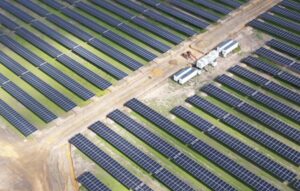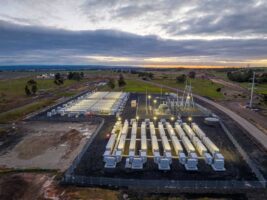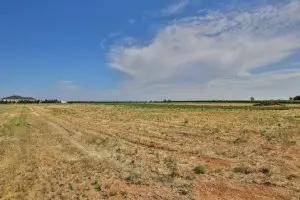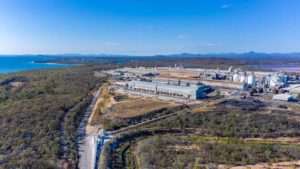An updated study on current and future generation costs by the CSIRO and the Australian Energy Market Operator confirms that wind, solar and storage technologies are by far the cheapest form of low carbon options for Australia, and are likely to dominate the global energy mix in coming decades.
The first report, GenCost 2018, identified that wind and solar were by far the cheapest forms of new generation technologies, clearly cheaper than coal, and even when combined with storage, remained easily the cheapest form low carbon electricity options.
A draft of the updated study, GenCost 2019-20, has been quietly posted on the AEMO website and confirms that wind and solar and storage remain the cheapest technologies, now and into the future, and much cheaper than the technologies promoted by the Australian government – gas, carbon capture, and nuclear.
The study is jointly funded by the CSIRO and AEMO, although CSIRO took carriage of the report, along with advisors Aurecon, who succeeded GHD which did the first version.
Its capital cost estimates – which assume continue cost reductions for solar, wind and dramatic falls for batteries, remain little changed from the 2018 version, although wind cost reductions are lower than expected last year.

And despite ferocious criticism by the nuclear lobby, its estimates for nuclear remain unchanged, largely because it says there have been no technology advances since the last report. It does recognise the potential for small nuclear reactors in certain scenarios, but these are heavily qualified: they are at least a decade away, and would still deliver a levellised cost of energy at least twice that of wind and solar and storage.
“The global generation mix is expected to be dominated by wind and solar photovoltaic (PV) by 2050 in all three scenarios explored in this report: Central, High CRE and Diverse technology,” the report says.
“The implementation of scenarios that include a broader set of global technology drivers has resulted in a wider range of potential capital cost reduction paths for wind and solar PV. The new scenarios also indicate that in some scenarios carbon capture and storage and nuclear small modular reactors could play a larger role than previously projected.”
The other changes in capital costs have been upward revisions for gas generators, mainly because investors are looking at smaller plants and so the costs per unit are higher, and for solar thermal technology – which is no surprise given the hiccups in that technology’s development and the cancellation of a proposed large project in South Australia.

For generation costs, expressed as the levellised cost of energy (LCOE), it notes that wind and solar are clearly the cheapest form of bulk energy, at half the cost of fossil fuel alternatives, and one fifth the cost of nuclear. Even with storage – shorter duration batteries or longer duration pumped hydro – wind and solar match fossil fuels, and are one third the cost of nuclear.
In coming years, the costs of wind and particularly solar are expected to continue to fall. And storage too, so their cost advantage of renewables and storage is expected to increase.

So, by 2030, nuclear is still well out of the money, and wind and solar have increased their cost advantage over fossil fuels, particularly those with a carbon price attached.
In virtually every scenario, the CSIRO study envisages a world dominated by wind and solar by 2050. Nuclear may play a slightly increased role in the “diverse technology” scenario, but this is only with artificial limits placed on the deployment of wind and solar.

The nuclear question is interesting, given the increasing calls from sections of the government to pursue the technology. CSIRO says there have been no new developments in the last year to change its estimated capital costs for coal or nuclear. And it is clear that many of these plants would be too big, and not flexible enough, in a modern grid with high renewables and distributed generation.
On small modular reactors, it says there is no hard evidence on costs because none have been built, and the main source of estimates has been from technology vendors, and “past experience has indicated that vendor-based estimates are often initially too low,” it writes.
“Constructing first-of-a-kind plant includes additional unforeseen costs associated with lack of experience in completing such projects on budget. SMR will not only be subject to first-of-a-kind costs in Australia but also the general engineering principle that building plant smaller leads to higher costs.”
But it only sees SMRs entering the equation in more than a decade’s time if governments get serious about the 2°C target, if they impose a limit on the renewable energy share, and if there is a significant carbon price.
Given that even the Coalition government expects the share of renewables to reach 50 per cent by 2030, and AEMO expects that to be higher by 2030 and heading to at least 74 per cent to 90 per cent by 2040, then that does not appear to leave much room for either carbon capture and storage or nuclear in this country.
And, of course, there is no enthusiasm for a carbon price from the main nuclear lobbyists, primarily the Minerals Council of Australia and the LNP politicians who are also pushing coal.
 The CSIRO study says that in some scenarios the cost of carbon capture and storage and nuclear could be lower than previous estimations, particularly if small modular reactors achieve a reduction in nuclear capital costs after 2030.
The CSIRO study says that in some scenarios the cost of carbon capture and storage and nuclear could be lower than previous estimations, particularly if small modular reactors achieve a reduction in nuclear capital costs after 2030.
Even then, as this graph shows, the cost of nuclear in 2040 will still be considerably more expensive than the combination of wind and solar and storage, and likely to be more than three times more expensive across different scenarios. A similar cost disparity remains for 2050. And investors, it notes, will go for value for money.










